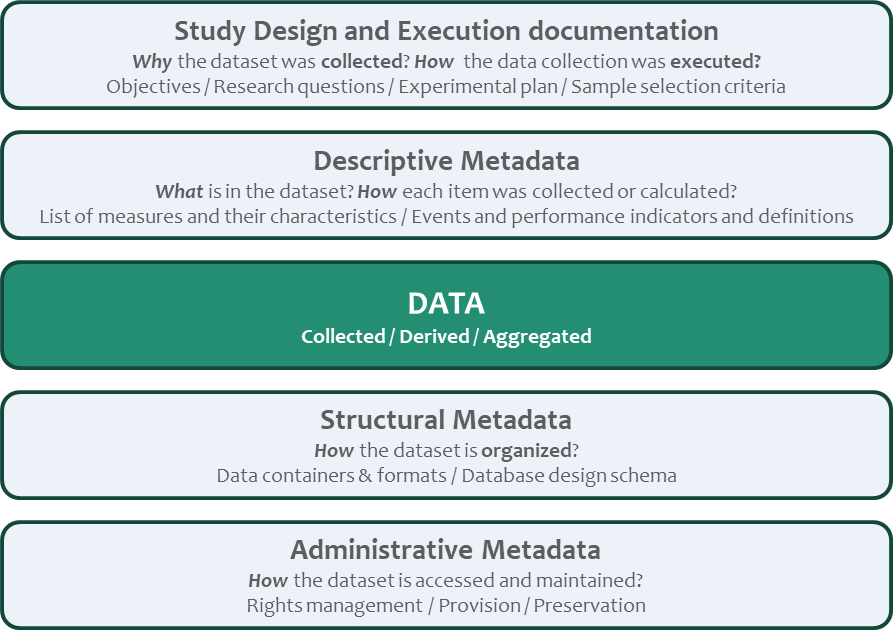4.1 Definitions
This document defines data as ‘any facts, statistics or digital material whose value might be used during analysis and impact its result’. Data can have format to enable its reading or storage, but on its own it may not have meaning.
The ISO/OECD definition (ISO 20546, 2019) is similar where ‘data is the reinterpretable representation of information in a formalized manner suitable for communication, interpretation, or processing’.
Information, however, refers to processed, organized or structured data, or data that has been given a semantic load, or a value under a certain business domain. Also information has a definition by ISO/OECD: ’Information refers to knowledge concerning objects, such as facts, events, things, processes or ideas, including concepts, that within a certain context has a particular meaning’.
A data element is an atomic unit of data that has precise meaning or precise semantics (e.g., represented as a column in a table or an array of values).
A categorization of data is proposed in the following chapter.
Metadata is data that defines and describes other data. This document defines metadata as ‘data that describe properties of other data, in the form of information about its origin, purpose, version, type of content, or any other information that may simplify data storage, consumption or processing’.
This document presents four different categories of CCAM metadata, each providing a different kind of information about the data. These are described below and in Figure 3:
- Study design and execution documentation, which corresponds to a high-level description of the data collection – its initial objectives and how they were met, description of the test site, etc.
- Descriptive metadata, which precisely describe each data element, including information about its origin and quality.
- Structural metadata, which describe how the data are organized.
- Administrative metadata, which set the conditions for accessing the data and how access is to be implemented.

Figure 3: Types of metadata in relation to data
In the following sections, data categories are introduced and classified, including examples and recommendations for which data should be systematically collected (see 4.2). The four metadata classes are more precisely defined, and what should be documented (according to good practice) for each of them is described (see 4.3).
The recommendations are based on best practices from NDS/FOT projects, as well as CCAM projects, and are applicable to other types of studies and frameworks where data is used.


